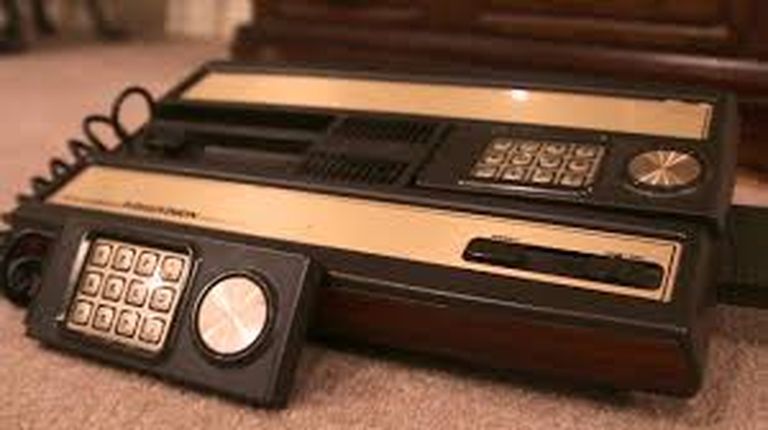

When I kicked off the Friday's Exit Strategy blog series last week, I wanted to reinforce the core content that makes ChannelE2E unique.
As many of our loyal readers now, we launched ChannlE2E in 2015 to help guide IT service providers on their journeys from Entrepreneur to Exit. Among our big priorities: Helping readers to close the so-called valuation gap -- your perceived value of your business ("Dan thinks his business is worth $10 million") vs. what somebody will pay for it ("We'll buy Dan's business for $4 million"). HTG Senior VP Arlin Sorensen shared some painful valuation gap reminders with me in late 2016. Service Leadership CEO Paul Dippell has often echoed those thoughts.
In short, most IT service provider owners and operators don't really know how much their companies are worth. Nor do they know all the KPIs (key performance indicators) that help to drive valuation.
Don't Be Clueless When Bidders Knock On Your Door
I was in a similar boat around the 2007 timeframe. At the time, Amy Katz and I were building our first IT media platform company together. Like an MSP, our business depended on annual recurring revenues. While I focused on content and our technology platforms, Amy ran the business as CEO and oversaw the finances; she did a stellar job making sure we grew in a responsible, profitable manner.

We got an unsolicited offer for the business around 2010. Amy handled the strategic details with the suitor, but checked in with me daily for my thoughts. I had a general feel for our annual revenues, so most of the thoughts I shared focused on revenue multiples -- was our business worth two times annual revenues? Three times? Something more? Less? I knew so little at the time.
Turns out, I was focused on the wrong KPIs (key performance indicators). The suitor zeroed in on a range of KPIs like EBITDA (earnings before interest, taxes, depreciation and amortization), revenue growth rates, profit growth rates, annual customer churn and more. Fortunately, Amy knew how to speak that language with the suitor. At the time, I didn't.
In terms of dollars and cents, we received a reasonable offer for that business at that moment in time back in 2010. We genuinely liked the suitors and saw potential synergies. But we ultimately declined to sell because the buyer wanted to finance a portion of the payments to us during a multi-year window -- a risky proposition in our minds. Also, we had a few ideas to grow our business profits even faster. So, we respectfully declined the offer and moved on.
It was a blessing in disguise. Within a few months, Amy called me with an additional media idea to spin up in that business. We grew faster. About a year later, we got two more bids for that business. When Amy called me to discuss the negotiations this time around, I understood the KPIs that Amy and the suitors were kicking around -- and their implications on our company's potential valuation. We ultimately received two fresh offers for the business.
We accepted one of the offers based on multiple factors (valuation, deal structure, post-sale roles, etc.) and inked a successful company sale in September 2011. Amy further accelerated that business under the new owners through 2013, and then we made our personal exits in early 2014. We took some time off, launched After Nines Inc. later that year -- and then ultimately pulled back the curtains on our ChannelE2E and MSSP Alert media brands thereafter.
14 MSP Valuation KPIs to Know
Our editorial coverage -- and our own M&A journey -- constantly refer back to key valuation KPIs.
As a starting point for business valuations, many folks focus on annual EBITDA (earnings before interest, taxes, depreciation and amortization) -- and then some multiple of that figure. You've got $5 million in revenue and 10 percent EBITDA (or roughly $500,000). You think you business is worth 5X to 7X EBITDA, so that equates to a valuation of $2.5 million to $3.5 million. Perhaps those are good starting points for discussion.
But yesterday during a ChannelE2E webcast, Service Leadership's Paul Dippell reminded guests that plenty of additional KPIs can weigh into a company's overall value. Dippell's list included these 14 variables:
1. Profit Percentage: Best-in-class MSPs have 18 percent EBTIDA with some top performers closer to 30 percent, Dippell says.
2. Revenue Size: It's certainly a factor on valuation, but generally speaking focus on improving your EBITDA percentage first.
3. Growth Rates: How fast, overall, is the business growing?
4. Pricing: Let's assume Acme MSP wants to buy Beta MSP. But Beta MSP's average monthly price per user is significantly lower than Acme MSP's monthly pricing. Dippell warns that scenario could make customer retention challenging post-deal, as the buyer attempts to raise prices for the acquired company's customer base. As a seller who wants to get a strong valuation, your pricing should be in the upper 33 percent to 25 percent of the market, Dippell recommends.
5. Consistency: Sequential improvement is good; peaks and valleys in terms of recurring revenues and profits are not good.
6. Geography: If the buyer values your neighborhood, you're in good shape to gain a bit on valuation.
7. Business Model: Make sure "you really are what you say you are." In other words, be careful not to mix various terminologies and variables into your true managed services recurring revenue stats.
8. Strategy: Got one?
9. Customer Diversity: It's best for the seller valuation if no single customer represents more than 5 percent of your annual revenues. Some MSPs generate 30 percent of revenues from a single customer -- and that means a good portion of annual revenue is at risk if one customer disappears, Dippell notes.
10. Customer and Employee Satisfaction: Strive for low customer churn, and less than 15 percent employee churn -- to prove that your services and your culture are worth a premium to a potential buyer.
11. Customer Contracts: Are they win-win, providing true value to customers and the IT service provider's own business?
12. Cash and Debt: If you're carrying a big debt load, you're basically dictating that a big chunk of the proceeds for the company sale will ultimately address the debt -- rather than your own nest egg.
13. Owners: Naturally, the more owners your business has, the less each owner receives from a company sale...
14. Deal Structure: You have to find a way to balance risk and reward for both the seller and buyer. For instance, the seller may want an all cash deal up-front. But that's risky for the buyer, so the buyer may push for a lower deal valuation. On the flip side, the buyer may push for a multi-year earnout based on the selling business's ongoing performance. The seller, in return, may push for a higher valuation since they can't get their hands on the proceeds all at once, Dippell notes.
KPIs That Impacted Our Business Sale
As I look back on our IT media business sale from 2011 -- again, not an MSP but we were recurring revenue-driven -- I think profit percentage (EBITDA) likely dominated much of the conversation. But the buyer also wanted piece of mind, so they asked Amy for just about every KPI listed above, though I don't think Geography was that big of a driver in the discussion. If you want more details that are ok for public consumption, Amy is the person to ask.
Looking back, are there terms from that M&A deal we'd like to potentially change? The short answer likely involves deal structure -- and a lengthy earn-out period. Everything worked out fine. But in our case, I bet both the buyer and the seller would have made some tweaks if we had to do it all over again. I'll share some broad-stroke details in a future edition of Friday's Exit Strategy.
Bonus: This Friday's Exit Strategy

PS: So what's on tap for me this weekend? My buildout of a retro-gaming home office continues. The lineup (so far) includes the Magnavox Odyssey 2, Atari 2600, Intellivision and Atari 800. I'll likely tuck a ColecoVision into the lineup soon. As part of my personal mid-life crisis, I've introduced my 12-year-old son to Star Raiders -- still one of the best home video games of all time. Special thanks to Dave Sobel from SolarWinds MSP for the retro-gaming inspiration. We've got the same addiction, though our platform choices are quiet different...
Thanks for reading ChannelE2E and our sister site MSSP Alert this week.
Joe Panettieri (Joe@AfterNines.com and @JoePanettieri) is co-founder and executive VP of After Nines Inc. and its IT media platforms — ChannelE2E and MSSP Alert.




